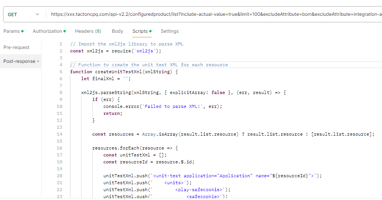In the world of Configure, Price, Quote (CPQ) systems, ensuring the accuracy of configurations and...
Testing CPQ Systems: Lessons Learned from Real-World Implementations
When was the last time a bug in your CPQ system caused a sales team to lose confidence? Or worse, delayed a major deal? Testing isn’t just about finding errors—it’s about protecting trust, ensuring reliability, and delivering value.
But let’s face it: CPQ testing is hard. Complex product configurations, integrated systems, and constantly changing business rules make it challenging to keep everything running smoothly. Yet, there’s a silver lining: the lessons learned from real-world implementations can help your team avoid common pitfalls and design a testing process that works.
Why Testing CPQ Systems Is Unique
Testing a CPQ system is not like testing other business software. Here’s why:
- Highly Complex Configurations: Every rule or dependency change has ripple effects across multiple products, pricing models, and workflows.
- Integrated Ecosystems: CPQ systems don’t operate in isolation—they interact with ERP, CRM, and PLM systems, creating numerous points of failure.
- Dynamic Business Needs: Frequent updates to pricing models, configurations, and workflows demand an agile testing approach to avoid disruptions.
Without a robust testing strategy, your CPQ system can quickly become a bottleneck rather than a business enabler.
The Two Dimensions of CPQ Testing
-
Technical Testing:
- Regression Testing: Ensure new changes don’t break existing features. Automated regression testing is ideal for this, particularly when dealing with repetitive scenarios.
- Integration Testing: Verify that the CPQ system communicates effectively with external systems like SAP or Salesforce.
- Legacy Compatibility: Test changes against historical configurations to ensure backward compatibility without slowing innovation.
-
Business Assurance Testing:
- Scenario Validation: Test how well the system handles real-world scenarios like quote revisions or complex discount rules.
- User Perspective Testing: Sales reps and other users must validate whether the system feels intuitive and delivers expected outcomes.
By combining these two dimensions, you ensure that both technical integrity and business value are maintained.
Lessons Learned from Real-World Projects
-
Test Early, Test Often
The earlier you catch issues, the cheaper they are to fix. Start testing during the planning phase by validating scope and requirements. Use automated tools to run frequent tests throughout the development cycle. -
Don’t Neglect Legacy Data
A common mistake is failing to test changes against older configurations. For example, a new pricing rule might work perfectly for recently added products but fail when applied to legacy SKUs. Ensure your testing process includes a diverse set of configurations. -
The Power of Business Reviews
Business stakeholders need to validate that system changes align with their goals. Involve them in testing stages to verify outcomes like quote accuracy, pricing logic, and approval workflows. -
Automation vs. Manual Testing
Automation excels at repetitive, predictable tasks like regression testing. However, manual testing is critical for unique scenarios or when validating user experience. The key is to strike a balance between the two. -
Role-Based Testing
Different user roles—sales reps, admins, and integrators—experience the CPQ system differently. Tailor tests to simulate how each group will interact with the system.
Common Pitfalls and How to Avoid Them
- Skipping Testing Under Time Pressure: Deadlines often tempt teams to rush releases without thorough testing. Resist this urge. Incomplete testing can cost far more in downtime and rework later.
- Testing in Isolation: Changes might pass individual tests but fail in integrated environments. Always test with a holistic view of how your CPQ system interacts with others.
- Overlooking Edge Cases: Even the best testing processes can miss rare scenarios. Build time into your process to explore outliers, like unexpected combinations of configuration options.
How CPQ Teams Can Improve Testing
- Automate What You Can: Use tools like Selenium or Tacton’s built-in testing frameworks to automate repetitive tests.
- Create Baselines: Use historical configurations and workflows as benchmarks for testing new changes.
- Run Parallel Testing: Test changes in a staging environment alongside production to identify issues before going live.
- Track and Learn: Keep a record of testing outcomes and common issues. Use these insights to refine your processes over time.
Final Thoughts: The Road to Reliable CPQ Testing
CPQ testing is as much an art as it is a science. The goal isn’t just to avoid bugs—it’s to ensure that every release improves the user experience and delivers business value. By learning from past mistakes and embracing a structured approach, you can build a testing process that supports innovation without compromising reliability.
Need Help Optimizing Your CPQ Testing?
cpq.se has years of experience designing effective testing strategies for complex CPQ environments. Let’s explore how we can help—book a virtual coffee with Magnus Fasth or Patrik Skjelfoss at https://www.cpq.se/meetcpqse.




